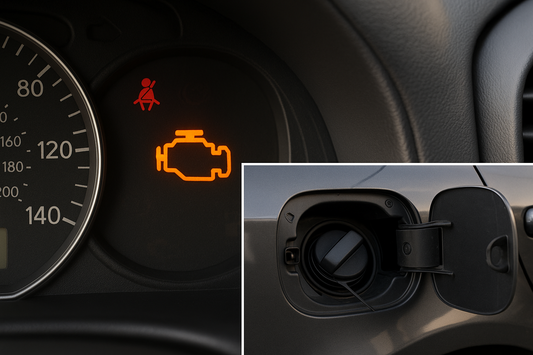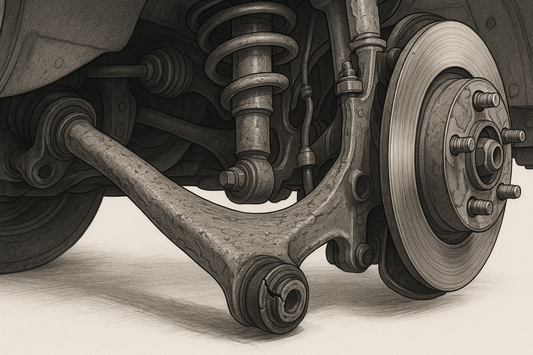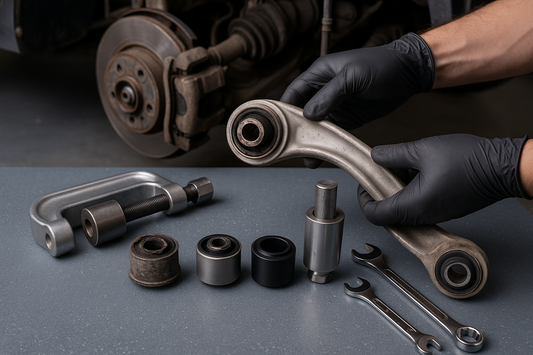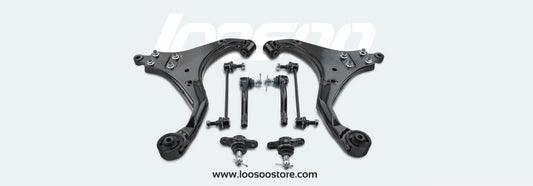Oxygen sensors (O2 sensors) are critical components in modern vehicles, monitoring exhaust gases to optimize fuel efficiency and reduce emissions. When these sensors fail—often due to contamination or extreme heat—drivers experience symptoms like check engine lights and poor acceleration. For reliable O2 sensor replacement, understanding diagnosis and installation is essential. Loosoo's precision-engineered sensors restore factory performance while preventing costly catalytic converter damage.
Role of Oxygen Sensors
Oxygen sensors (O2 sensors) monitor exhaust gas composition to optimize air-fuel ratios. Modern vehicles use upstream sensors (pre-catalytic converter) for fuel mixture control and downstream sensors (post-cat) for emissions compliance. Loosoo’s precision-engineered sensors ensure ±1% measurement accuracy across operating temperatures.
5 Warning Signs of a Failing O2 Sensor
-
Check Engine Light (CEL) Illumination
- Common codes: P0130 (Circuit Malfunction), P0171 (System Lean)
- Loosoo sensors include self-diagnostics to prevent false triggers
-
Poor Fuel Economy
- Sudden 10-20% MPG drop due to rich fuel mixtures
-
Rough Engine Performance
- Misfires, stalling, or hesitation during acceleration
-
Gasoline-Smelling Exhaust
- Unburned fuel exiting the exhaust system
-
Failed Emissions Test
- Elevated hydrocarbon (HC) and carbon monoxide (CO) levels
Pro Tip: Replace sensors every 80k-100k miles to prevent catalytic converter damage ($1,200+ repair)
Replacement Cost Breakdown
| Service Type | Price Range | Loosoo Advantage |
|---|---|---|
| DIY Replacement | $50–$120 (part only) | Pre-calibrated plug-and-play kits |
| Professional Service | $200–$500 | 5-year sensor warranty |
| Full Set (V6 Engine) | $300–$700 | 15% multi-sensor discount |
Step-by-Step Replacement Guide
Tools Required:
- Jack stands + hydraulic jack
- O2 sensor socket (22mm)
- Torque wrench (30 Nm spec)
- Penetrating oil (e.g., PB Blaster)
Procedure:
-
Safety First:
- Disconnect battery → Cool exhaust system (30 mins)
-
Sensor Access:
- Locate upstream/downstream sensors on exhaust manifold/catalytic converter
-
Removal:
- Apply penetrating oil → Wait 15 mins → Unplug connector → Unscrew sensor
-
Installation:
- Apply anti-seize to threads → Hand-tighten → Torque to spec
- Loosoo’s nickel-plated connectors prevent galvanic corrosion
Critical FAQs
Q: Can I drive with a faulty O2 sensor?
A: Limited short trips only. Extended use risks catalytic converter failure.
Q: Should I replace all sensors simultaneously?
A: Only if contaminated (coolant/oil ash present). Otherwise, target failed units first.
Q: Why choose Loosoo sensors?
- Ceramic heating elements (faster cold-start readiness)
- Wide-band compatibility (2000–2025 models)
- OEM-spec connectors (no wiring modifications)

Diagnosis Tips
- Scan for Codes: Use OBD2 scanner to identify faulty bank/sensor
- Live Data Check: Monitor voltage fluctuations (0.1V–0.9V = healthy)
- Visual Inspection: Check for oil/coolant contamination or physical damage
Why Timely Replacement Matters
Ignoring symptoms causes:
- 25% fuel waste
- Catalytic converter overheating
- Engine control module (ECM) calibration errors
Loosoo’s direct-fit sensors restore factory performance with:
- 3-minute average install time
- CARB/EPA compliance certification
- Real-time air-fuel ratio optimization
Conclusion
Timely O2 sensor replacement prevents catalytic converter failure and restores fuel efficiency. For optimal results, use Loosoo's direct-fit sensors featuring anti-seize coatings and factory-calibrated performance. Remember: diagnosing trouble codes before replacement saves costs, and professional installation is recommended for rusted exhaust systems. Extend your vehicle's lifespan by addressing O2 sensor issues within 100 miles of symptom onset.










